Oculus Rift Controllers, VR Games, And Software Features Announced
by Brett Howse on June 11, 2015 11:15 PM EST- Posted in
- VR
- Oculus Rift
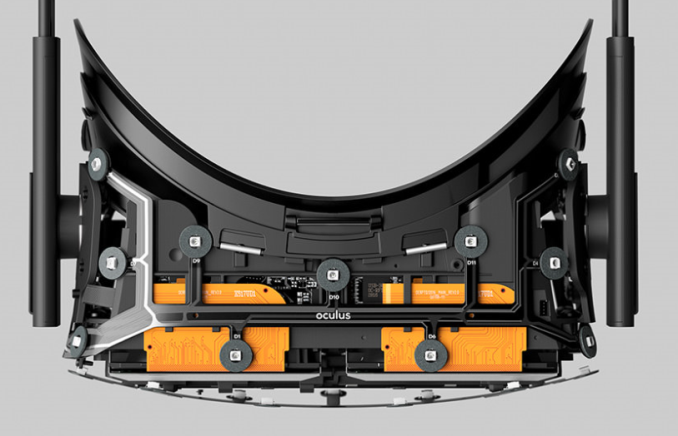
On the eve of E3, Oculus held a livestream to announce some more details of the upcoming Oculus Rift Virtual Reality headset. Just about a month ago, they announced that they were targeting a Q1 2016 release, and with that time fast approaching, they have given some more details on the unit itself, as well as what kind of experiences you can expect with it. Oculus has re-affirmed the Q1'16 launch date, and now we finally know the specs for the retail consumer unit.
One of the key points they brought up was that the unit itself needs to be comfortable, and part of that comfort is weight. January seems like a long time ago when I got to try out the Crescent Bay version of the Rift, but at the time I was impressed with how it felt, and I don’t recall the weight at all which I guess is the point. The final, consumer version of the Rift in turn is close to the Crescent Bay version, with further enhancements for both the electronics and the overall fit itself to bring down the weight and make it more comfortable.
Audio is also a big part of the experience, and the included headphones on Crescent Bay were quite good. For the consumer version Oculus is going in a similar direction, but today they have also confirmed that you will be able to wear your own headphones as well if you prefer that. The directional audio is a key piece to the immersion and the Oculus team has done a great job with that aspect.
Another part though is the displays. When we met with Oculus’s CEO Brendan Iribe at CES, one of the interesting things he told us was that they have found that by interleaving a black frame in between each video frame, it can prevent ghosting. In order to do this though, the refresh rate needs to be pretty high with the unit we tested running at 90 Hz. Today they announced a tiny bit about the hardware, and the Oculus Rift will ship with two OLED panels designed for low-persistence. Oculus has previously commented that they're running at a combined 2160x1200, and while they don't list the individual panel size, 1080x1200 is a safe bet. The OLED panels are behind optical lenses which help the user focus on a screen so close to their eye without eye strain, and the inter-pupil distance is important. There will be an adjustment dial that you can tweak to make the Rift work best for you.
Tracking of your head movement is done with the help of an IR LED constellation tracking system, unlike the Hololens which does all of the tracking itself with its own cameras. This makes installation a bit more difficult but should be more precise and reduce the overall weight of the head unit.
For those that wear glasses, the company has improved the design to better allow for glasses, and they also make it easy to replace the foam surrounding the headset.
One thing that was really not known yet was what kind of control mechanism Oculus was going to employ. In the demos I did at CES, there was no interaction, and you were basically a bystander. Oculus announced today that every Rift will be shipping with an Xbox One wireless controller and the just announced wireless adapter for Windows. This is a mutually beneficial agreement to say the least, with Microsoft getting in on the VR action and Oculus getting access to a mature controller design. Oculus even stated that the controller is going to be the best way to play a lot of VR games. However they also announced their own controller for a new genre of VR games to give an even more immersive experience.
Oculus Touch is the name of new controller system that Oculus has come up with. Each controller has a traditional analog thumbstick, two buttons, an analog trigger, and a “hand trigger” input mechanism. The two controllers are mirror images of each other, with one for each hand. They are wireless as well, and use the IR LED tracking system as well in order to be used in space. The controllers will also offer haptic feedback so that they can be used to simulate real world touch experiences. They also detect some finger poses (not full finger tracking) in order to perform whatever task is assigned to that pose. These should be pretty cool and I can’t wait to try them out.
Hardware is certainly part of the story, but software is going to be possibly an even bigger part. The Rift needs to launch with quality games, and it looks like Oculus has some developers on board with EVE: Valkyrie, Chronos, and Edge of Nowhere being some of the featured games.
They also showed off their 2D homescreen which they are projecting into the 3D rift world. There will be easy access to social networks and of course multiplayer gaming in virtual reality.
In addition to the Xbox controller, Oculus has also worked with Microsoft to enable the upcoming Xbox Game Streaming into the Rift, so that you can be fully immersed. This will not magically make Xbox games 3D VR worlds, but instead will project the Xbox game into a big 2D screen inside the Rift and block out all distractions.
I’ve been a bit of a VR skeptic, but my time with the Rift was pretty cool. I can see a lot of applications for this outside of gaming, but of course gaming is going to be a big part of VR and Oculus looks to be lining up a pretty nice looking launch. A big part is going to be quality titles for the Rift and Oculus is working hard on that aspect. The hardware is now pretty polished.
Source: Oculus


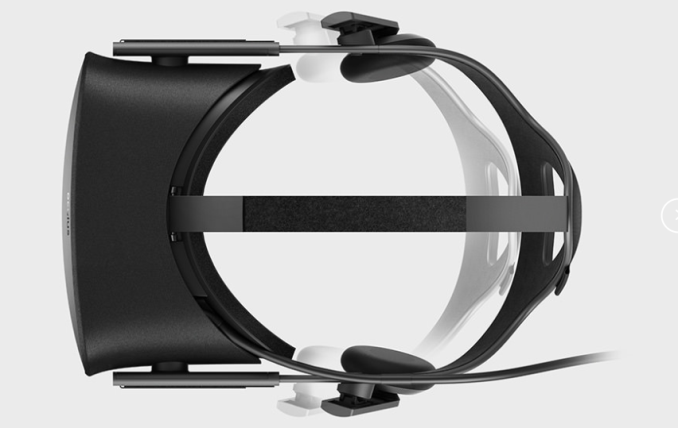
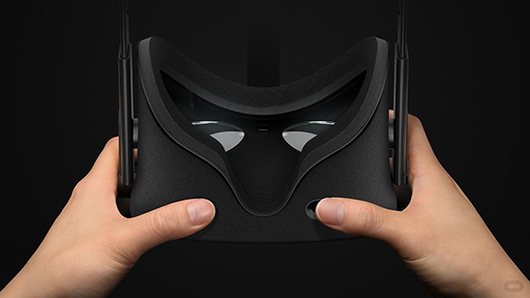
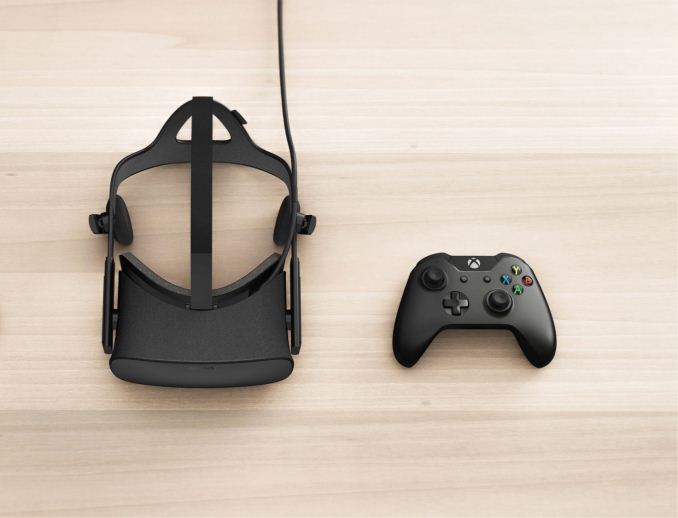
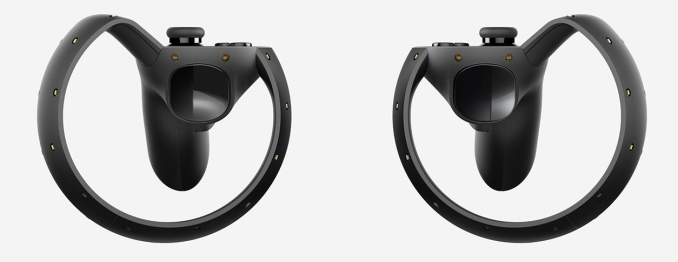
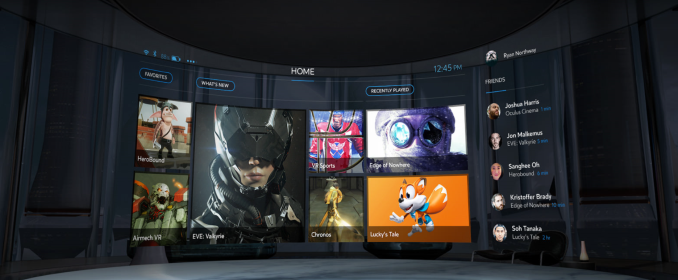








44 Comments
View All Comments
Murloc - Saturday, June 13, 2015 - link
there are virtual reality things that you stand in being developed.I've seen one on youtube and it's not pricey stuff at all. Basically it's a harness with a slippery floor, so you just walk inside of that thing with your socks on and you don't move but you also don't fall down because the harness keeps you in place so your feet just slide.
And then it also rotates, and you can sit down and the harness will keep you seated at a certain height, so you can like enter a car.
JeffFlanagan - Friday, June 12, 2015 - link
I currently use a Samsung controller with my VR Gear to move forward/back and fire in games.A 2D treadmill for movement, and a toy gun that appears to be a real weapon in-game would be better from my perspective, but a lot of people want to sit when they game, and most people don't want to buy and give up space to a 2D treadmill. In that case you need a hand-held controller.
Wwhat - Friday, June 12, 2015 - link
But the oculus VR controllers are handheld, just more 3D and one for each hand.And if you just want to sit at a desk staring straight ahead, then why an oculus? Won't a simple monitor, or 3D monitor if need be be, be your thing?
It's not like I expect all VR users to run around and install treadmills though, but the VR demos and experience is about being in a virtual 3D world, not just looking at a virtual screen or looking AT a 3D world.
Although clearly MS wants oculus to push their gear as the 'looking at a virtual screen' concept, but that is not the design concept of it.
sabrewings - Sunday, June 14, 2015 - link
" Won't a simple monitor, or 3D monitor if need be be, be your thing?"It's not the same. I get the feeling you haven't tried a real VR setup. Simply turning your head and being able to look around without being confined to a box in front of you makes a huge difference in presence. It's how your brain is trained to be able to take in info. You want to look left, you turn your neck, feel the change in orientation through your vestibular system, and take in the new data. Even if I'm only going to sit and look around a cockpit in E:D, No Man's Sky, or Star Citizen, it is worth it. Being able to lean forward in E:D and get a better look out the cockpit side windows, or move around to see around the "wing" of the craft adds a huge sense of realism. Plus, for flight sim type games a HOTAS is as specialized an input as you're going to need. E:D's in game graphics are even modeled after the X52 HOTAS so when you look down at your "hands" they're doing the same thing and using the same controls as your real hands.
VR is as much about presence as it is interaction. Try not to get too caught up in how you're going to interact with it and start with how much you'll feel like you're there just by observation. It's really very powerful. I agree 100% that the 3D controllers Steam and Oculus have come up with are better than a controller, and they will even be required for a lot of experiences and games. However, your notion that without them the headset is useless is far from the case.
Wolfpup - Friday, June 19, 2015 - link
I'm not understanding the confusion. The game not actually supporting VR, and just appearing as a screen, has nothing to do with the input device.In either case, a game has to be built to actually support VR so it puts you "in" the world and uses head tracking, etc. That's going to be immersive if done right, I'd assume, and it will be regardless of controller input.
At that point a controller that actually works-i.e. either a gamepad or a mouse/keyboard, is going to be superior to some gimmicky "motion" controls that are horribly imprecise and don't work. That's going to be much less immersive, just as it is without VR.
Wolfpup - Friday, June 19, 2015 - link
Oh, and regarding the "clearly MS wants oculus to push their gear as the 'looking at a virtual screen' concept, but that is not the design concept of it.", I don't think that's clear. The point is that that lets any game USE it. That's the fallback mode for if a game isn't built for VR. That doesn't mean Microsoft doesn't want people to build stuff specifically for VR, it would just be lame if ALL games couldn't be displayed on it, regardless of whether they use it for anything but a "regular" type display.Murloc - Saturday, June 13, 2015 - link
virtuix omni + oculus rift will be a win. It's not even a treadmill so cheaper and smaller.The current videos are stupid because they aren't tracking the gun so it's useless to aim with it, but with IR leds they will be able to separate gun pointing and head movement.
Wolfpup - Friday, June 19, 2015 - link
But some kind of motion control wont' respond quickly, or at all. It doesn't work without VR so I don't know why it would magically start working with it. Even if it did work, you're still sitting in one spot, and you're still not actually touching anything. Abstracting it away one small step, but adding in much more precision-i.e. leaving things how they are, seems like it'll end up a MUCH superior option, just as it is without VR.Wolfpup - Friday, June 19, 2015 - link
I'm guessing a traditional controller (or mouse/keyboard) will be ideal for VR just like they are normally. Every alternative input method has been a joke, imprecise and no fun at all.sabrewings - Tuesday, June 23, 2015 - link
Granted, I haven't tried them, but that's not the impression I've gotten from anyone who used SteamVR's controllers. Not one person has said they are imprecise. In fact, I've read in several independent articles that it's so precise that when they hand them to you and you can see them in the virtual world you have no problem reaching out to grab them since they're right where your brain (and the SteamVR tracking system and headset) says it should be. Combine that with testers of the HTC Vive prototypes saying that its overall experience is better and very resistant to nausea, and I think they have a real winner.I can't wait to try them. I know it'll be a premium system but I foresee not wanting an Oculus at all after getting the Steam headset first. I'm concerned that all Oculus will have is brand recognition since it's been in development publicly for so long. SteamVR has been in development just as long and I think they have more "out of the box" ideas than Oculus.